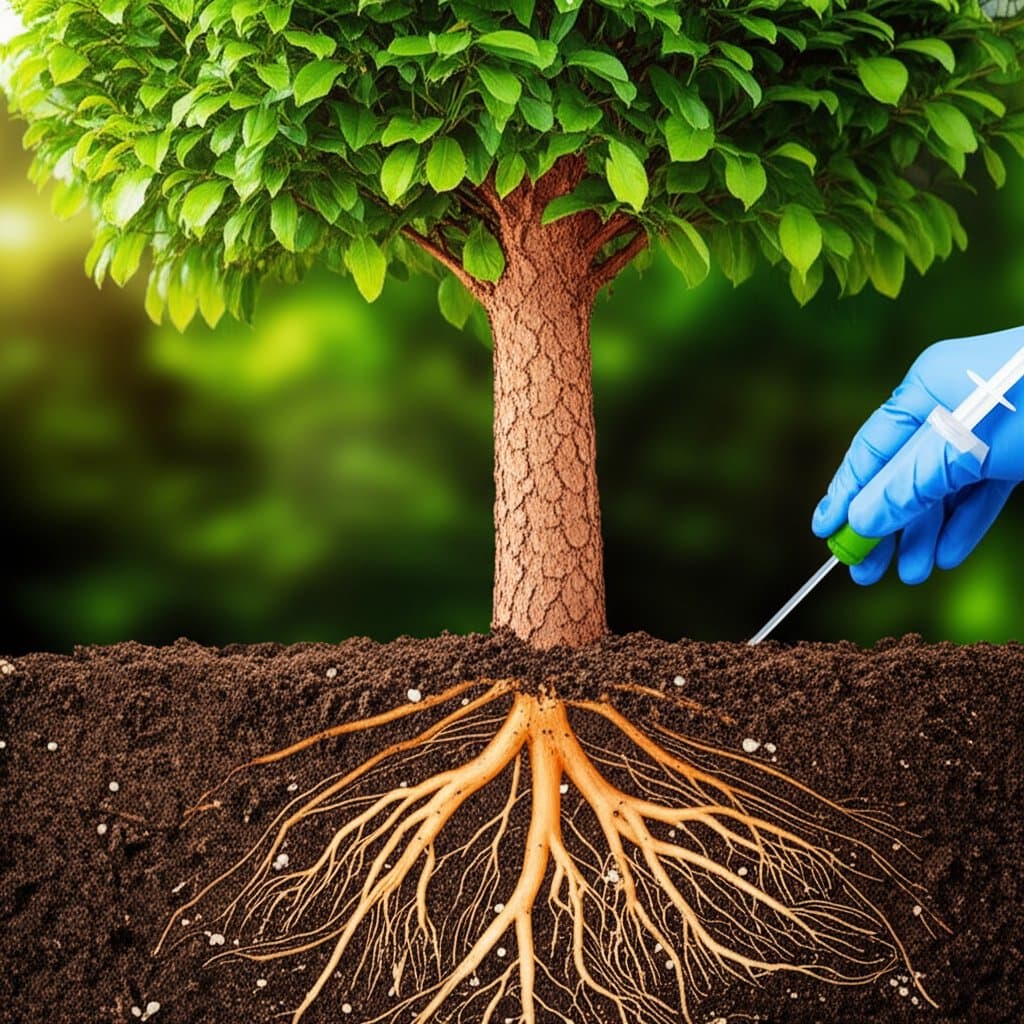Mycorrhizal Injections: Doubling Tree Growth Rates for Healthier Landscapes
Homeowners frequently encounter challenges with trees that grow slowly or exhibit signs of stress, despite consistent watering and fertilization efforts. Weak roots hinder nutrient absorption, leaving trees susceptible to diseases, drought, and suboptimal soil conditions. Mycorrhizal injections emerge as an effective solution endorsed by arborists, delivering substantial improvements in growth and vitality. This guide details the nature of these injections, their mechanisms, associated costs, and strategies to integrate them into your landscape maintenance routine.
Understanding Mycorrhizal Injections
Mycorrhizal injections involve the targeted application of beneficial fungi into the soil surrounding a tree's root zone. These fungi establish a symbiotic partnership with the roots, effectively extending their reach to capture water and essential nutrients more efficiently. Consequently, trees develop greater vigor and heightened defenses against environmental pressures and pathogens. This technique replicates the interconnected fungal networks found in natural forests, fostering underground support systems among trees.
Typical Costs for Mycorrhizal Injections
Costs for mycorrhizal injections typically fall between $100 and $500 per tree, influenced by factors such as tree dimensions, health status, and soil characteristics. Larger, mature trees demand greater volumes of inoculant and extended labor, whereas smaller specimens incur lower expenses.
| Tree Size | Cost Range |
|---|---|
| Small (under 20 ft) | $100 - $200 |
| Medium (20-40 ft) | $200 - $350 |
| Large (over 40 ft) | $350 - $500 |
These estimates encompass the fungal inoculant and professional application services. Providers often extend discounts for multiple-tree treatments, making it economical for comprehensive landscape projects.
Key Factors Influencing Mycorrhizal Injection Costs
Tree Dimensions
Expansive root systems in larger trees necessitate broader injection coverage and additional time investment. In contrast, smaller trees benefit from compact treatment zones that streamline the process and reduce expenses.
Health Status of the Tree
Vigorous trees might require only a standard maintenance application, whereas compromised or ill trees demand intensified formulations. Soils that are compacted or deficient in nutrients further elevate the required effort and materials.
Species Variations
Certain species, including oaks and pines, exhibit pronounced benefits from mycorrhizal associations. Other varieties may necessitate tailored fungal strains for optimal efficacy, which can raise costs due to the premium on specialized products.
Soil Composition and Site Access
Dense clay or compacted soils complicate injection delivery, prolonging labor. Trees situated on inclines or adjacent to structures like patios present logistical hurdles that may increment pricing.
Treatment Intervals
A single application suffices for many trees every two to three years. However, recently transplanted or distressed specimens often require repeated treatments to solidify robust root development.
Step-by-Step Mycorrhizal Injection Procedure
Certified arborists employ a structured protocol to maximize treatment outcomes:
-
Initial Evaluation and Soil Analysis
Arborists assess the tree's condition, analyze soil properties, and delineate the root zone to select an appropriate fungal formulation and quantity. -
Site Preparation
Clear the root area of surface debris, mulch, or obstructions to facilitate precise soil access. -
Precise Injection Application
Employ a pressurized probe to deliver the mycorrhizal suspension directly into the soil proximate to the roots, promoting uniform dispersal with limited disruption. -
Immediate Aftercare
Irrigate the area generously to activate fungal colonization and root integration. Arborists may suggest supplementary fertilizers or organic mulch to sustain hydration levels. -
Ongoing Observation
Track indicators of progress, such as enhanced foliage density and growth spurts, across subsequent months to verify treatment success.
Evaluating DIY Options Against Professional Services
Suitable Scenarios for DIY Applications
For novice gardeners or small-scale projects involving saplings and accessible garden beds, commercial mycorrhizal powders or granules provide a cost-effective entry point. These products suit initial plantings where soil conditions permit straightforward incorporation.
Rationale for Professional Engagement
Mature, high-value, or ailing trees warrant expert intervention to achieve superior results. Professionals utilize advanced injection equipment for deep, consistent fungal delivery and customize selections based on precise soil and species analyses, minimizing the potential for suboptimal outcomes.
| Method | Ideal Applications | Risk Assessment | Anticipated Outcomes |
|---|---|---|---|
| DIY | Saplings and garden features | Low | Moderate enhancements in vitality |
| Professional | Established or compromised trees | Minimal | Pronounced acceleration in growth |
Selecting a Reliable Provider for Mycorrhizal Injections
-
Verify Professional Qualifications
Seek arborists certified in soil microbiology and mycorrhizal applications. Such credentials guarantee expertise in dosing and execution protocols. -
Inquire on Fungal Formulations
Demand details on the fungi strains employed and their compatibility with your regional soils and tree varieties. -
Request References and Case Studies
Review past client testimonials and examples of successful treatments to gauge reliability and effectiveness. -
Compare Quotes and Services
Obtain multiple estimates that outline inclusions, such as follow-up monitoring, to ensure comprehensive value.
Common Questions on Mycorrhizal Injections
What Timeline Applies for Observing Benefits?
Trees typically display improved growth and foliage vibrancy within several months. Full root proliferation and nutrient optimization evolve as the fungal network matures over an extended period.
Do These Injections Suit Every Tree Type?
These natural, non-toxic interventions pose no harm and align with ecosystems in healthy woodlands. They benefit a wide array of species without adverse effects on surrounding vegetation or soil integrity.
Can They Aid Trees Afflicted by Disease?
By bolstering root function and nutrient delivery, injections support rehabilitation efforts. They complement pruning and soil amendments but do not substitute for targeted disease management in advanced cases.
What Is the Recommended Frequency?
Arborists advise renewal every two to three years, adjusted for soil fertility and exposure to stressors like urban pollution or climate extremes.
Implementing Mycorrhizal Treatments to Elevate Your Landscape
Mycorrhizal injections provide a scientifically validated method to accelerate tree growth twofold, fortify root architecture, and enrich soil ecosystems. Collaborate with qualified arborists to tailor applications that safeguard and enhance your trees' longevity, yielding enduring aesthetic and environmental returns.
